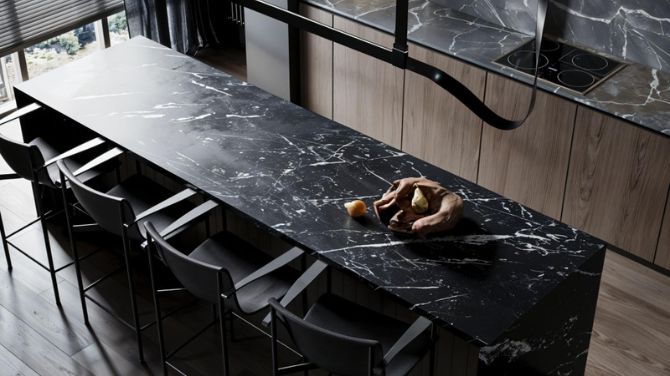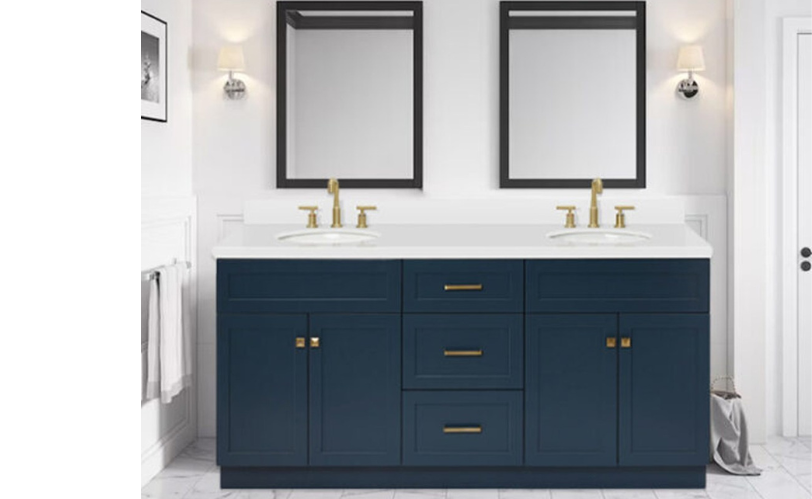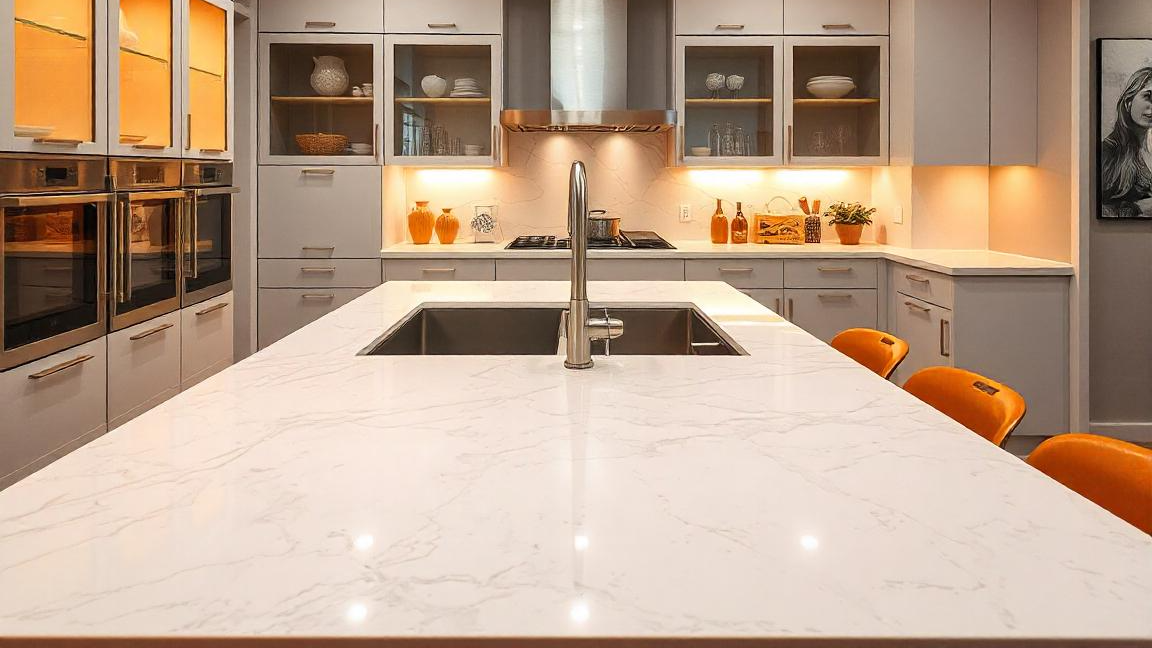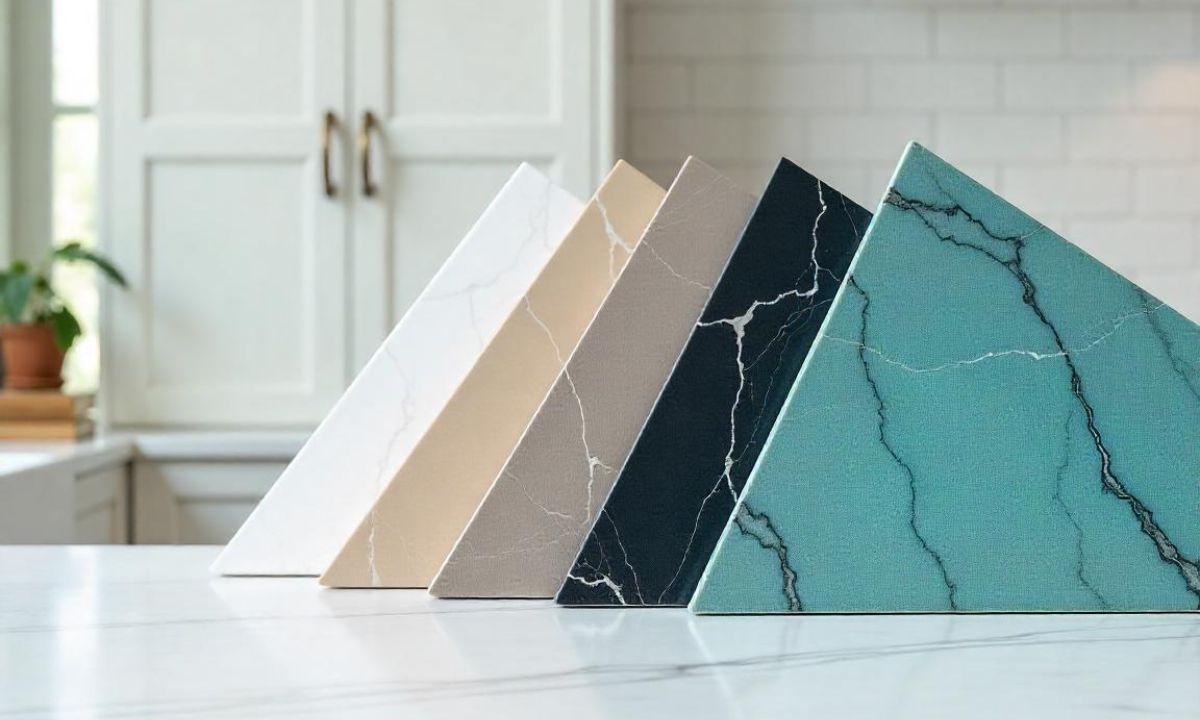Maintaining Your Vanity Top: Tips for Lasting Beauty and Shine
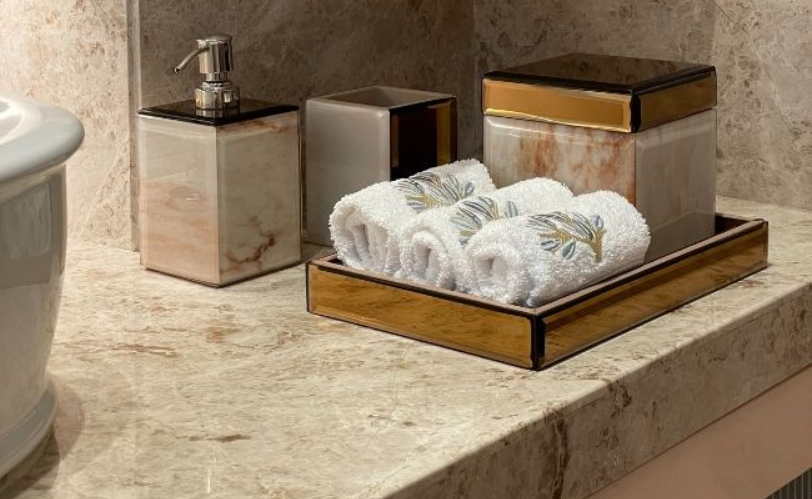
Your vanity top is one of the most visible and frequently used features of your bathroom. It adds style and functionality to your space, and it can make a big difference in the overall look and feel of your bathroom. However, it also requires proper care and maintenance to keep its beauty and shine for years to come. Depending on the material of it, you may need to follow different cleaning and maintenance tips to avoid damage and deterioration. In this blog post, we will share with you some general and specific tips on how to maintain your quartz vanity top.
Daily Cleaning Tips
What to Use
Regular cleaning helps to keep the accumulation of grime and dust at bay and the vanity top appearing new all the time. Materials needed in the process include the following:
- A microfiber cloth: Microfiber is incredibly soft and at the same time, it does a great job in picking up dust and dirt without the fear of scratching.
- Soap that is not strong: Given that the pH is balanced, it has to be a mild soap that will not and does not affect the material of the surface.
- Water that is warm: Dirt and oil are inclined to be removed much more thoroughly with the help of warm rather than cold water in the cleansing process.
Cleaning Procedure:
- Pour a small amount of dish soap into a bowl of warm water.
- Wet a microfiber cloth into the soap solution and gently go round the entire surface in circular motions while cleaning it.
- When you are finished wiping the surface, use another dry clean cloth to pat it dry and get rid of any water spots or streaks.
With this simple cleaning routine, the sparkle of the vanity top will be retained without causing any damage to the surface.
2. Deep Cleaning: Weekly or Monthly
Whilst the use of daily cleaning is able to keep your vanity top in a good condition, deep cleaning, on the other hand, is the method to make sure that hard stains, mineral deposits, and oils do not become the cause of long-term problems.
When and How to Do Deep Cleaning
First of all, a deep cleaning operation has to be performed at least once per week for vanities that are intensively used and once a month for guest bathrooms and bathrooms that are rarely used. With the help of this practice, one will ensure that no deposits of any kind will affect his/her countertop in any negative way. Furthermore, the process also prevents the possibility of any dirt making the surface of the sink because of the already existing stains from toothpaste, petroleum jelly and so on. Become faint.
- Step 1: First of all, eliminate from the vanity surface all the better part of items-bottles, makeup, toiletries, etc.
- Step 2: Secondly, take a cleaner that fits the vanity material (stone, quartz, laminate, etc.).
- Step 3: The next step is to wipe the surface of the vanity by sticking to the instructions given by the manufacturer and allowing it to be there for a certain period to release the dirt and grime.
- Step 4: Finally, you should use a microfiber cloth to the surface perimeter and then, of course, dry it with a clean soft cloth. A step to prevent the possibility of any dirt and/or grime to appear again.
Safe Products to Use
The first thing that you should not forget is that the purchase of a cleaner which matches the vanity material is definitely an essential factor for the proper and safe cleaning of the sink. Then try to recognize whether the cleaner that you use is environmentally friendly and you will avoid complicating your sensitive skin. For sure, harm-free and environmentally friendly cleaners have as their aim not to cause harmful and at the same time, they protect the natural resources of the planet.
- Quartz and Engineered Stone: It might be considered sufficient to use a gentle and non-abrasive cleanser that is planned for a quartz surface.
- Granite and Marble: To be on the safe side, you are advised to apply a neutral pH stone cleaner that is extraordinary for stone surfaces so that you will ensure that it will not affect the finish.
- Laminate: Get used to washing the surface of the laminate material with the help of a solution of mild soap or use a gentle all-purpose cleaner.
Avoid:
Never Ever think to use chemical cleaning agents too much that are strongly alkaline, like some that are used in the industry, such as strong alkaline bleaching powders and ammonia-based glass cleaners, etc., because those are the elements that cause the surface of granite, marble, etc., to become corroded and filthy. They are the same chemicals that with their actions on the surface
DIY Cleaners (Use with Caution)
Green cleaning products can be very effective but you must use them with caution to ensure that they don’t harm your vanity top.
- Baking soda paste: A baking soda and water paste could be a remedy for the simplest of stains. Apply the paste to the stain, wait for 10-15 minutes, and then wipe it off with a damp cloth. This is a recommended method for surfaces like quartz that are non-porous.
- Vinegar and water: Vinegar is a great cleaner for some materials like laminate but it definitely cannot be used on natural stone. It can corrode the surface and irremediably compromise it.
Tip: Always do a patch test of your DIY cleaner, so making sure there’s no scratch on your vanity top.
3. Protect the Surface
By being consistent with your habits and taking preventive measures, you can avoid costly potential damages to your vanity top and maintain its attractive appearance.
Use Mats or Trays for Toiletries
When all the items like perfumes, lotions, and make-ups are placed on trays or mats you can effortlessly avoid any cases of accidental spillage or leakage which probably makes the surface stain easily. Rubber or silicone are good materials for this kind of product as they keep traction and absorption of minor spills, respectively, without inflicting any damages to the material down there.
Why It Matters: Placing the items directly on the vanity top without any shield can cause discoloration, stains, or even etched areas that are caused by alcohol, oil, and acids that are a part of the many beauty and cleaning products you use.
Avoid Placing Hot Tools Directly
Hair tools like curling irons, hair straighteners, and hair blowers can become very hot and exceed a certain temperature, which means that they can damage the vanity top irreparably. The heat can affect materials in form of melting, discoloration or even breaking.
Ways to Protect Yourself from Heat:
- Make sure you always use heat-resistant pads, silicone mats, or holders intended for hot tools.
- Allow heat tools to cool down before putting them on the vanity top.
Wipe Up Spills Quickly
Even though most spills are easily removed, your vanity top can suffer irreversible discoloration if toothpaste, makeup, or hair dye are left to stand for too long. Due to the fact that the marble is porous, a spill of this kind will likely lead to the formation of a stubborn stain.
A Great Idea: Have a small piece of cloth or paper towel within your arm’s reach so you can instantly wipe away any spills. By following this tip, not only in a natural effortless way but also in accordance with the planet being clean, you will be able to keep the surface of your vanity top clean and sparkling.
4. Prevent Scratches and Stains
Without proper care, a countertop will be easily scratched and stained. Below are sure ways of preventing the two:
Don’t Use the Vanity Top as a Cutting Board or Workspace
It’s tempting to use any flat surface for projects, but your vanity top is not designed to withstand sharp objects or heavy impacts. Using knives, scissors, or any other sharp items can cause deep scratches that are difficult to repair.
Why This Matters:
Scratches can disrupt the smooth, polished finish of your vanity and make it harder to clean.
Be Kind to the Heavy Things
Heavy containers, metal bottles, or bathroom decor can be the cause of the damage if fallen or pulled on the surface.
What Is to Be Done: It is necessary to pick up big items during the process of transport and it is also better to pull the items across the surface rather than dragging them to avoid damaging your vanity top.
Place a Coaster Under Perfumes
Perfumes, lotions, and oils sometimes can have ingredients that not only discolor but also stains to the vanity top. To prevent such damage, be sure to use coasters, trays, and pads that are made with soft fabric.
5. Seal It (If Necessary)
Some Stones Need to Be Sealed
Granite, marble, and limestone are the most common natural stones used that are otherwise porous and can absorb liquids that can cause permanent damage or leaves stain. For example, if your vanity top is made of one of these materials, you may need to seal it so that it is protected from any spills or mishaps.
If Sealing is Necessary – The water test is the best answer, simply sprinkle water on the surface, if it is absorbed or discolored it should be resealed as soon as possible.
Two Quick Ways You Can Use to Achieve Your Vanity Top Sealing at Home
- Surface cleaning: A clean vanity top that doesn’t hold any dirt is a suitable one for sealing. The first thing you should do is make sure you clean the vanity top thoroughly to remove any debris and prepare for sealing.
- Sealer Application: Use a cloth or an applicator and put the sealer on the surface in a thin and uniform layer.
- Refer to the manufacturer’s directions to know the duration the sealer needs to stay on the surface before you can remove any residue. Normally, this is around 15-30 minutes.
- Polish the Surface: After all the sealer is absorbed, take a dry cloth and rub the surface to get rid of any residues that might be left behind.
How Often to Reseal: The sealing frequency is dependent on the material and usage. A 6-12 month periodic resealing is suitable for most natural stones.
Specific Tips for Maintaining Your Vanity Top
In addition to the general tips, you may also need to follow some specific tips for maintaining it. Here are some of the maintenance tips:
Quartz is a popular choice for vanity tops, as it is durable, stain-resistant, and low-maintenance. Quartz does not need to be sealed, as it is non-porous and resistant to bacteria and mold. However, quartz can be damaged by heat, chemicals, or abrasives, so you should avoid exposing it to these elements. To clean it use a mild soap or detergent diluted with water, or a quartz cleaner. Wipe the surface with a soft cloth or sponge, and rinse with clean water. Dry the surface with a soft cloth or microfiber towel. To polish it, use a quartz polish and follow the manufacturer’s instructions.
Conclusion
By following these tips, you can maintain your vanity top and keep it looking beautiful and shiny for a long time. Your vanity top is an important part of your bathroom, and it deserves proper care and attention. If you need any help with choosing, installing, or maintaining your vanity top, you can contact us at Imperial Vanities. We are a leading supplier of vanity tops, and we can help you with all your vanity top needs. Visit our social media to learn more about our products and services. Thank you for reading our blog post, and we hope you found it helpful and informative.


